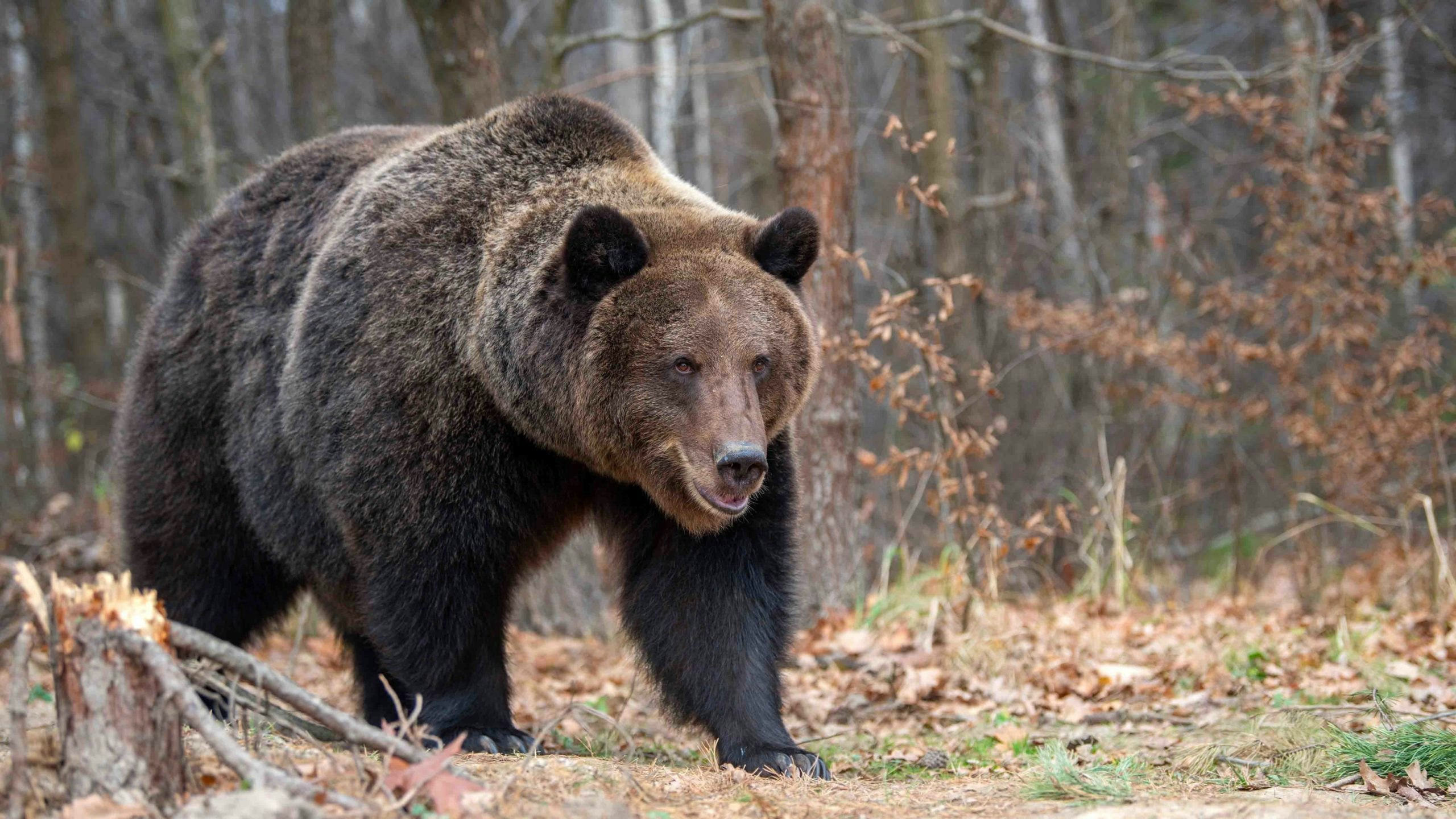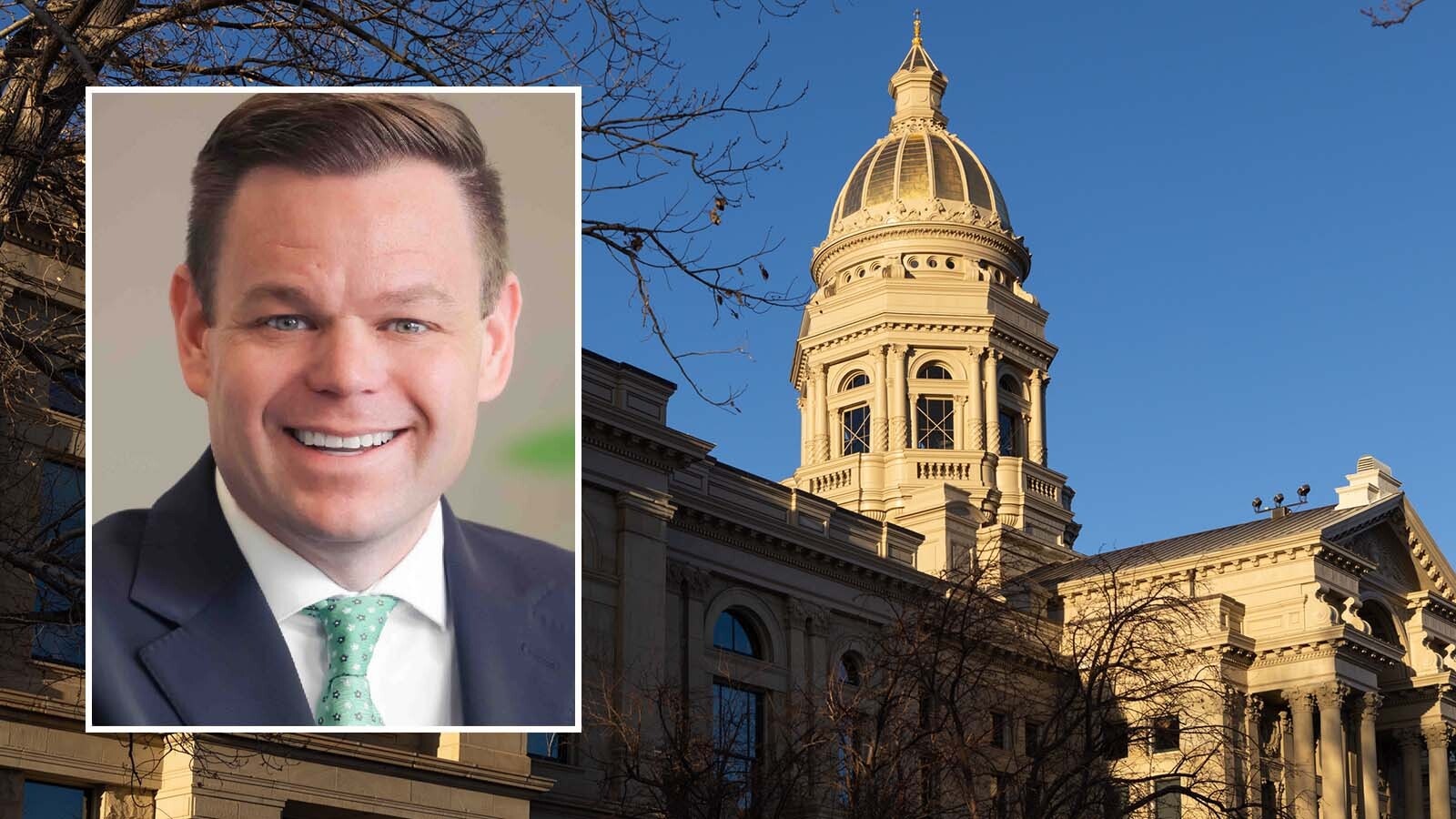Wyoming will try once again to gain the authority to manage the grizzly bears in the Greater Yellowstone Ecosystem and Gov. Mark Gordon said Thursday he is confident the federal government will side with the state.
Referring several times to the catchphrase “Follow the science” used frequently by the Biden administration, Gordon announced during a news conference the state is filing a petition with the U.S. Fish and Wildlife Service to win the right to manage the bears inside its borders.
“I am optimistic,” he said. “If this administration, which continues to talk about the science and how we need to follow the science, Wyoming has the very best science so I’ll take them at their word.”
During his news conference, Gordon said the state will submit a petition to the U.S. Fish and Wildlife Service asking for Yellowstone grizzlies to be removed from the endangered species list, clearing the way for state management of the animals. The Fish and Wildlife Service has 90 days to issue a recommendation on the petition and then will have a full year to make a decision on the request.
Grizzly bears were removed briefly from the endangered species list in 2017, but a federal judge ordered them to be returned to the list, returning management of the animals to the federal government.
Agreement
There is agreement between the state and federal government on some of the requirements to remove the bears from the list.
The U.S. Fish and Wildlife Service does consider Yellowstone’s grizzlies “biologically recovered,” with the bear’s population meeting recovery goals in 2003.
Today, estimates set the number of grizzlies in the Greater Yellowstone Ecosystem at more than 1,000 — which is nearly 10 times what it was when the bear was first listed under the Endangered Species Act.
And this doesn’t count the number of bears outside of the area, which is believed to be significant.
The push for delisting has been ongoing for years.
In 2015, President Obama’s Director of the U.S. Fish and Wildlife Service said he was in favor of it.
Two years later, delisting did occur under the Trump administration, but only briefly. The courts intervened, relisted the animal, and management authority went back to the federal government.
Changes
Game and Fish Director Brian Nesvik said the State of Wyoming has addressed the concerns expressed by the court in its 2017 ruling, giving him confidence the State will be victorious.
“We were very, very close to the finish line [in 2017],” Nesvik said. “I think if we make these changes, I’m optimistic that once they evaluate the petition based on science and its merits, that we will prevail.”
Those changes, according to a release from the governor’s office, include:
- Amending grizzly bear management policies that will adjust the annual management and mortality targets.
- Using the updated population model now adopted by grizzly bear experts.
- Ensuring the bear’s long-term genetic health and and providing for translocation of bears into the population, as needed to maintain genetic diversity.
Geography
The third point, however, does not mean other parts of Wyoming could see a reintroduction of the grizzly.
Nesvik said only the Greater Yellowstone Ecosystem is large enough to sustain the population.
“Frankly, there’s really not a lot of other places where grizzly bears could do well and be successful because of other uses,” he said pointing to the Big Horn mountains as an example.
Because of the agricultural and recreational interests, there’s not enough space there, he said, that would keep the grizzly “out of trouble.”
“Grizzly bears need large tracts of unroaded areas, without a lot of other use in order to be successful. If they get close to those other kind of human uses, they find themselves in trouble,” he said.
That trouble can lead to death, Nesvik said stating that the department has had to kill up to 35 grizzlies per year.
Management
Through sound management practices, including hunting, the grizzly population can be managed at a sustainable level and fewer negative interactions with humans would likely occur, he said.
Noted Wyoming outdoorsman Paul Ulrich praised the governor on Thursday.
“I applaud the governor for his actions today,” Ulrich said. “The grizzly has successfully rebounded to the point where they are encroaching on areas that just can’t handle it. I wouldn’t be surprised if grizzlies will be roaming the streets of Pinedale soon if we don’t manage them correctly.”
Others weren’t as supportive. Award-winning wildlife photographer Tom Mangelsen told the Casper Star Tribune if delisting occurs, a legal battle would probably result.
“We’ll fight it again, just like we have the last two or three times,” he said. “It’s just frustrating that we keep going through this,” he said.
Federal Support
The governor has a lot of support in Washington. Members of the congressional delegations from Wyoming, Montana, and Idaho are in favor of the move — even on the Democratic side.
Back in April, U.S. Sen. Jon Tester, D-Montana, told Montana Public Radio, “The grizzly populations in Yellowstone and the Northern Continental Divide are recovered, and the folks at Montana Fish, Wildlife, and Parks have shown they are more than capable of managing the Yellowstone grizzlies.”
Wyoming’s delegation — U.S. Sens. John Barrasso and Cynthia Lummis and U.S. Rep. Liz Cheney, are also unanimous in their support of removing the grizzly from the endangered species at.
Cheney introduced legislation called the “Grizzly Bear State Management Act of 2021,” which would empower states to manage their grizzly populations based on science. Barrasso and Lummis have offered the same legislation in the Senate.





